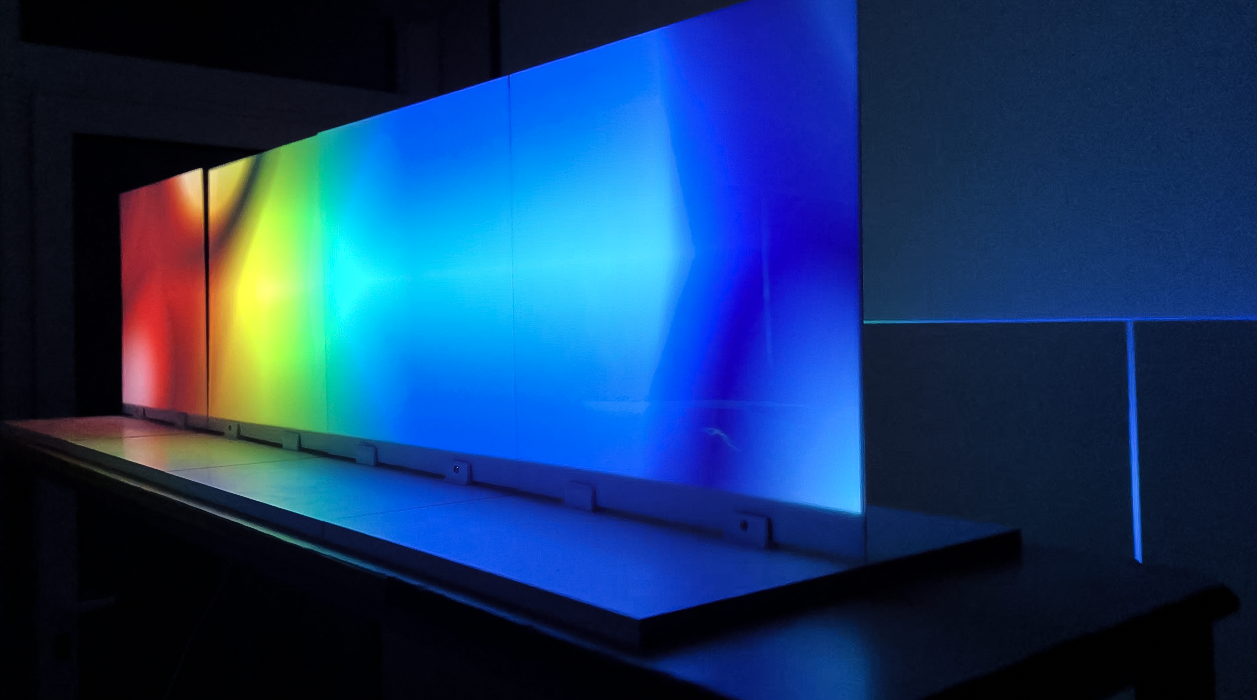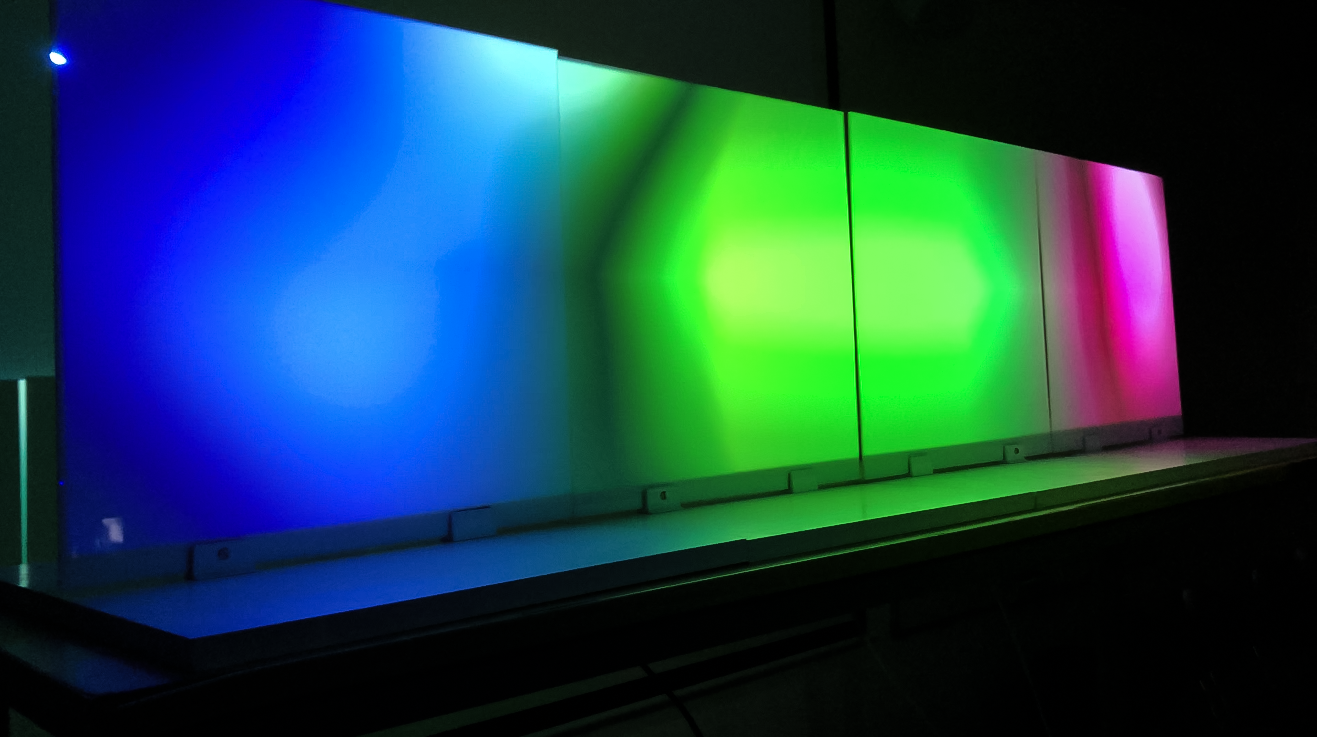GRAVITON II
︎practice based research
Sound, image, and space: emergent phenomena through embodied interaction.
graviton II is an audiovisual installation that explores the dynamic interplay between sound, image, space, and embodied perception. Developed as part of an interdisciplinary research trajectory, the project proposes a shift from conventional time-based media frameworks toward a spatial and phenomenological understanding of audiovisual experience.
At its core, graviton II consists of a custom-designed object that functions both as a sound emitter and as a projection surface. Built with acrylic surfaces excited by audio transducers, the object emits spatialized pure sine tones derived from Harry Partch’s 43-tone just intonation system. Simultaneously, it serves as the canvas for algorithmically generated visual fields, composed of evolving color gradients and noise patterns.
The work responds to the audience’s presence through an embedded ultrasonic sensor, which dynamically modulates the harmonic structures based on proximity. This interactivity is intentionally subtle and continuous, encouraging movement and spatial exploration rather than direct cause-effect reactions.
Conceptually, graviton II aims to dissolve the separations between sound, image, and physical space, emphasizing their constant mutual becoming. Rather than presenting a linear narrative or explicit synchronization, the piece cultivates an open-ended perceptual field where tonal centers shift, visual textures transform, and space itself becomes an active participant in the experience.
The project was developed through a combination of Supercollider (for sound synthesis and algorithmic generation), Touchdesigner (for real-time visual processing), and Arduino (for sensing and data transmission). These technologies enable an autonomous, self-generative system capable of creating an infinite variety of audiovisual states, each subtly shaped by the audience’s movements.
The theoretical foundations of graviton II draw on ideas from embodied cognition, spatial theories of audiovisuality, and phenomenology. It reflects an understanding of audiovisual media not as sequences of discrete events but as fluid, dynamic spaces of potentiality and affective resonance.
Ultimately, graviton II invites the audience into a participatory experience that unfolds through time, not as a series of fixed moments, but as a continuum of shifting perceptual trajectories. It emphasizes the idea that meaning and affect in audiovisual art emerge not through static forms or simple correlations, but through the embodied, spatial negotiation between bodies, sounds, images, and environment.
At its core, graviton II consists of a custom-designed object that functions both as a sound emitter and as a projection surface. Built with acrylic surfaces excited by audio transducers, the object emits spatialized pure sine tones derived from Harry Partch’s 43-tone just intonation system. Simultaneously, it serves as the canvas for algorithmically generated visual fields, composed of evolving color gradients and noise patterns.
The work responds to the audience’s presence through an embedded ultrasonic sensor, which dynamically modulates the harmonic structures based on proximity. This interactivity is intentionally subtle and continuous, encouraging movement and spatial exploration rather than direct cause-effect reactions.
Conceptually, graviton II aims to dissolve the separations between sound, image, and physical space, emphasizing their constant mutual becoming. Rather than presenting a linear narrative or explicit synchronization, the piece cultivates an open-ended perceptual field where tonal centers shift, visual textures transform, and space itself becomes an active participant in the experience.
The project was developed through a combination of Supercollider (for sound synthesis and algorithmic generation), Touchdesigner (for real-time visual processing), and Arduino (for sensing and data transmission). These technologies enable an autonomous, self-generative system capable of creating an infinite variety of audiovisual states, each subtly shaped by the audience’s movements.
The theoretical foundations of graviton II draw on ideas from embodied cognition, spatial theories of audiovisuality, and phenomenology. It reflects an understanding of audiovisual media not as sequences of discrete events but as fluid, dynamic spaces of potentiality and affective resonance.
Ultimately, graviton II invites the audience into a participatory experience that unfolds through time, not as a series of fixed moments, but as a continuum of shifting perceptual trajectories. It emphasizes the idea that meaning and affect in audiovisual art emerge not through static forms or simple correlations, but through the embodied, spatial negotiation between bodies, sounds, images, and environment.
ULHT, Lisbon, June 2022.


